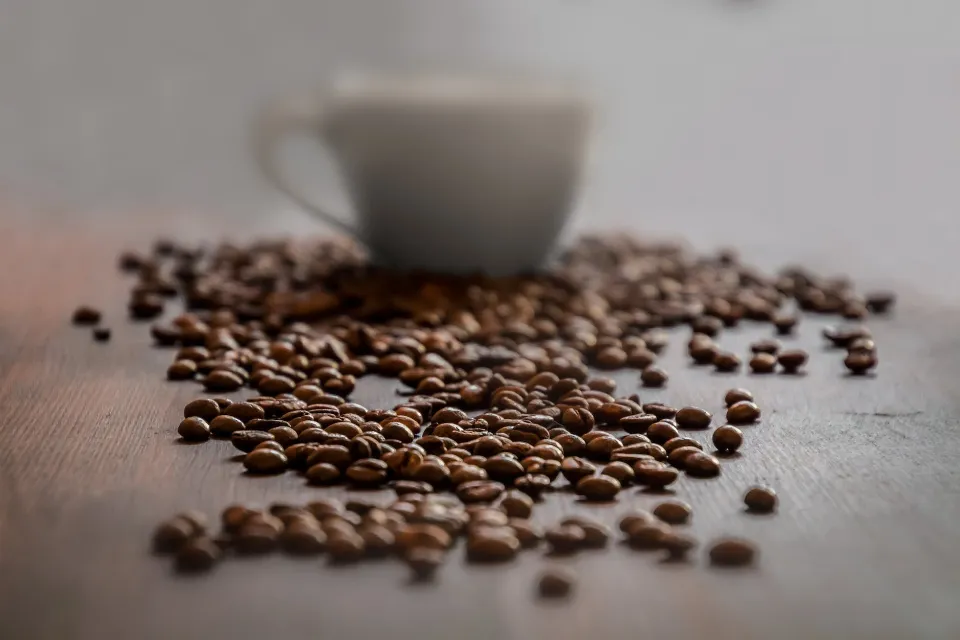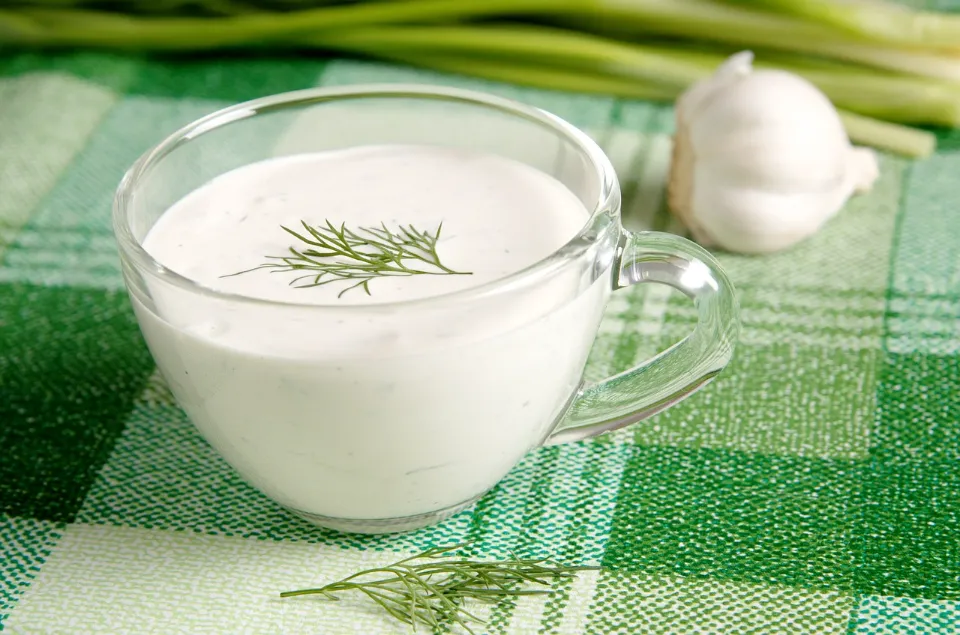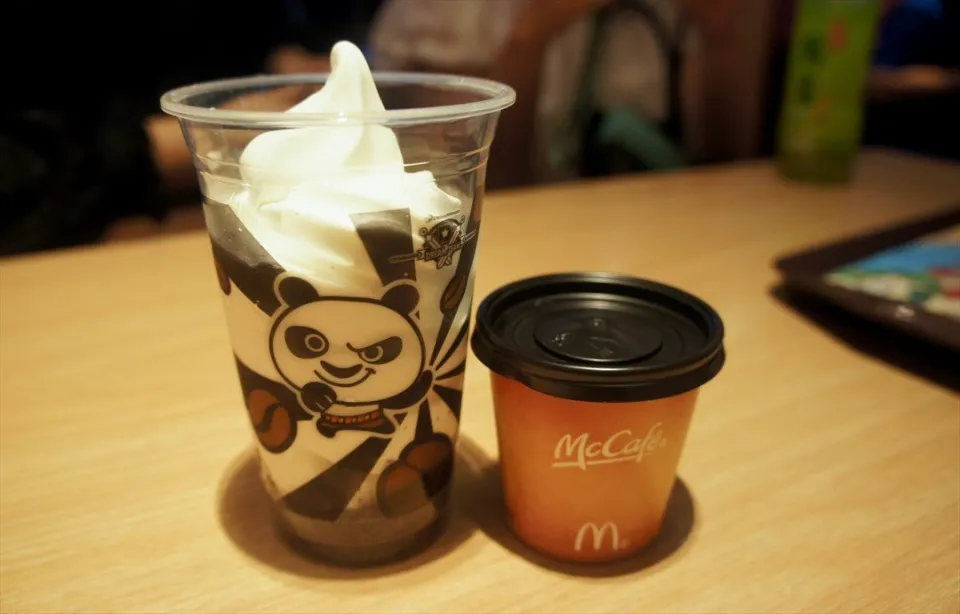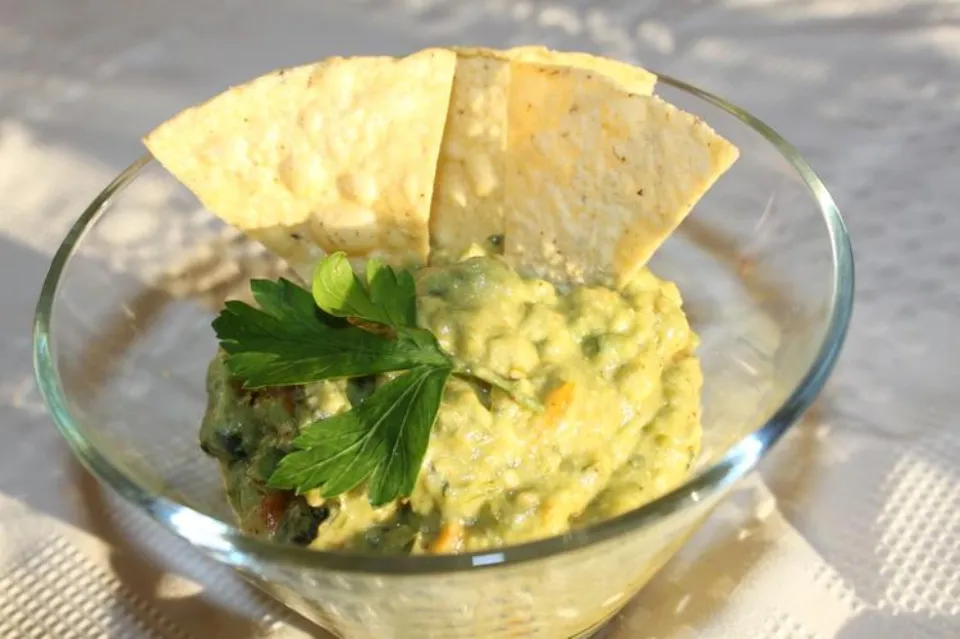Do you believe there is little to no distinction between coffee beans and espresso beans? Despite the fact that you are not alone, there are some significant differences.
Espresso is identical to coffee beans in every way. Dark roast coffee has been roasted for a long time at high temperatures and is the result of the espresso extraction method.
Learn what makes these beans different from one another and which ones to use for the type of coffee you’re making.
Are Espresso Beans and Coffee Beans the Same?
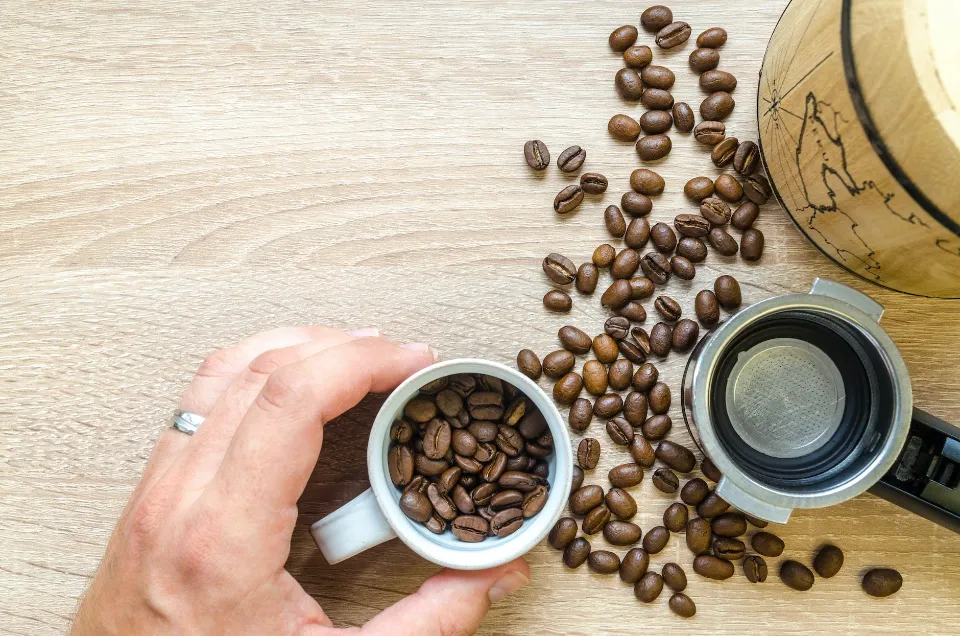
Yup! Most coffee beans are either Robusta or Arabica beans. This applies to any coffee beverage you make, including espresso. The espresso bean is just a coffee bean that has been more thoroughly roasted, ground more finely, and brewed in an espresso maker or aeropress.
Read More: 8 Best Coffee Beans for Cold Brew – Your Complete Guide
What is Espresso?
Espresso is a shot of highly concentrated coffee that is made by passing very hot water through finely ground coffee beans under high pressure. The brewing method and the grind are two of the key distinctions between espresso and coffee, as shown by the definition of espresso.
Espresso is coffee. It’s just made differently than “regular” coffee made in the USA.
Read More: 5 Best Iced Coffee Makers (2023 Reviews)
Is Espresso Stronger Than Dark Roast?
In summary, dark roast coffee is coffee that has been roasted for a long time at high temperatures and is produced using the espresso extraction method. “Stronger” coffee can mean many things: high in caffeine, bitter, flavorful, etc. A strong cup of coffee, in the opinion of the professionals at Bean & Bean, will be full of flavor and contain a lot of caffeine.
Contrary to what many people think, caffeine levels across all roasts are identical. Actually, the way you brew it—both in terms of technique and how much coffee you use—determines how much caffeine it contains.
The simple response is thus: possibly. Sometimes, espresso shots can be “stronger” than dark roast that was brewed using a French Press, but not “stronger” than a dark roast coffee that was brewed using a drip method.
Whether you prefer a strong brew or not, taste is personal, and you know what you like.
Read More: Pour Over Coffee vs French Press – Which Method is Better?
The Differences Between Espresso and Coffee
Roast
Espresso beans are roasted longer and darker than the beans used for drip coffee.
Light, medium, and medium-dark roasts are typically used for drip coffee. That’s what you think of when you think of traditional “American” coffee.
Espresso is roasted for a longer time, usually past the second crack, so it has a toasted and deeper flavor. Additionally, since the beans are roasted for a longer period of time, less acidity and more oiliness are released. This creates a heavier, fuller feeling in the mouth.
Find out more information about the various coffee roasts here.
In general, if you see a bag of whole coffee beans that says “espresso” on it, the roaster is stating that they roasted the beans to the dark/espresso roast point.
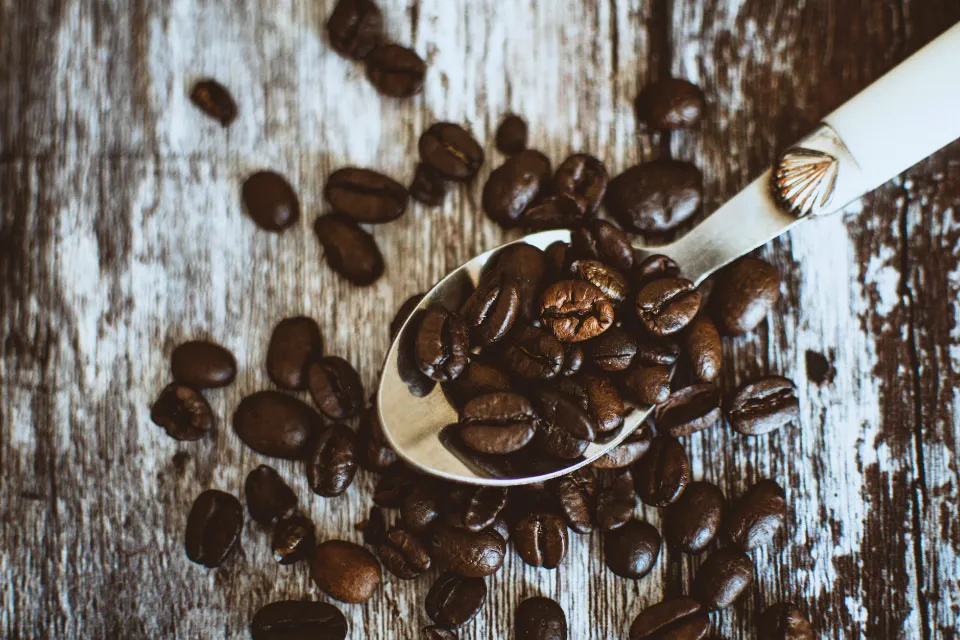
Grind
An espresso grind is typically much finer than other types of coffee grinds. This is so that hot water can be forced through tightly packed grounds during the espresso-making process. The coffee grounds need to be very fine, like the texture of sand, because the water comes into contact with them for a shorter period of time.
If you see a bag of ground coffee beans that says “espresso,” it usually means that the beans are roasted to the espresso point and they’re ground to a fine espresso grind.
Pro-tip: Espresso grounds are our favorite option for DIY coffee skincare, because it’s fine and less likely to damage skin compared to coarser grinds.
Brewing
You have a variety of options for making your typical cup of coffee, including the French press, drip machine, and percolator. However, brewing espresso calls for a particular method. This yields one or two shots (1-2oz) of highly concentrated espresso and calls for either an espresso machine or an aeropress.
Authentic espresso can’t be made in a regular coffee pot. For the extraction process to really work its magic, high pressure is required.
To make espresso, you need some talent. The appropriate tools are also needed. That said, you can still learn at home. You can make café-quality espresso at home every morning once you’ve figured it out. This article from the Wirecutter will help you start to learn how to make espresso at home.
Also Read: Can You Heat Up Cold Brew Coffee – Will It Change the Flavor?
Taste
Espresso has a distinct flavor from drip coffee because it is roasted, ground, and brewed differently. It typically has a bolder, less acidic flavor and a full-bodied, well-rounded finish. It tastes “stronger,” meaning that it has a rich coffee flavor. It frequently feels heavier because roasting specifically brings out more oils in the beans.
What Are the Best Coffee Beans for Espresso?
Here are our suggestions for making espresso at home in light of that. Use a dark or medium roast for espresso if you want a stronger, bolder, and more bitter cup of coffee. For the best flavor, we suggest experimenting with a coffee blend, like our Downtown Blend, which has been supplying New Yorkers with energy for 12 years! Our Santa Felisa Gesha Washed is your best option if you’re looking for a coffee with a fruitier and floral flavor.
A great cup of coffee requires more than just choosing a roast. You can experiment with single-origin coffee or blends, various coffee origins, various processed coffee varieties, and more.
Does Espresso Have More Caffeine?
Contrary to popular belief, drip coffee contains less caffeine than espresso. It’s actually the other way around! Espresso has a little bit more caffeine on average than drip coffee. That’s because espresso beans are roasted for a longer period of time than light or medium roast beans, which causes a significant amount of the caffeine to be burned off.
However, espresso contains a lot of caffeine per ounce. Basically, one shot of espresso (1 ounce) has a similar caffeine content as one cup of drip coffee (8-10 ounces). However, if you drank 8 ounces of espresso, you would have consumed way more caffeine than you should have each day!
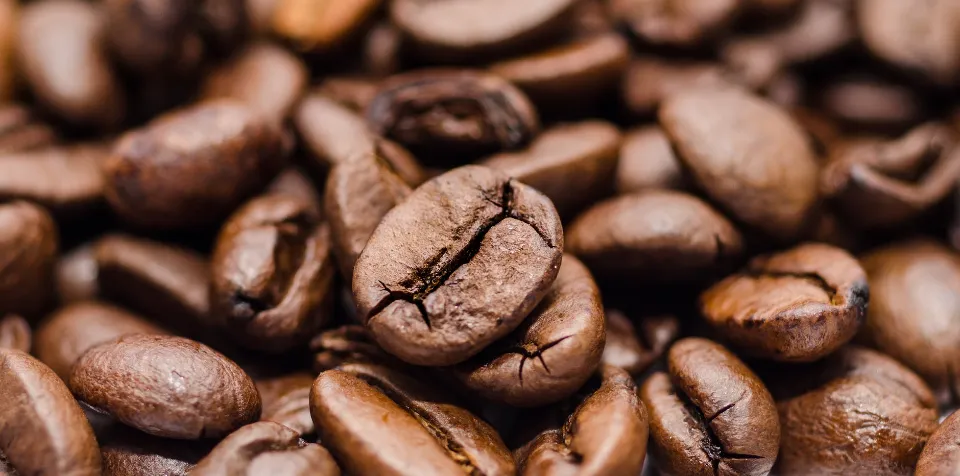
Can You Use Coffee Beans for Espresso?
Imagine you’re in a tight spot. You only have medium roast lying around the house, but an aeropress-made espresso drink is what you are dying to have. Is the medium roast suitable for espresso?
When it comes to experimenting with your ideal cup of coffee, there are no restrictions. Although the medium roast won’t taste as robust or bold as the dark or espresso roast, you can still grind it extremely fine to achieve the ideal consistency for the espresso brewing method.
It’s feasible, but not the best solution. We have noticed that a medium roast and a medium coarseness will not produce an espresso. It may have a weak or watered-down flavor.
What Should You Choose for the Best Coffee?
Unfortunately, because it depends on your preferences, there isn’t a simple answer to this. Nevertheless, a few pointers might be useful to you as you choose the ideal coffee.
- To start, buy yourself a bean grinder and purchase whole bean coffee or espresso. As opposed to using pre-ground beans, this will result in a fresher cup.
- If you’re able to do so, buy a pack of each type of roast and try them out at home. You could even brew a pot of each at the same time and compare them side by side. This should make what you do or don’t like about each one more apparent.
- Once you have an idea of which roast you prefer, you can explore different flavor profiles. You’ll see beans in the store that come from all over the world.
A bean may be described as fruity and floral by the roaster or as nutty and chocolaty. With such differing descriptions, choosing a specific type of coffee may feel overwhelming.
Conclusion
To make espresso or coffee, all you need is the right grind; you don’t need a particular bean, roast, or blend.
Espresso is identical to coffee beans in every way. When specialty roasters write “espresso blend” or “drip blend,” it’s just the brew method roaster’s believe will make the flavor profile really shine. You do you and make coffee however you love; it’s a matter of personal taste and preference.

